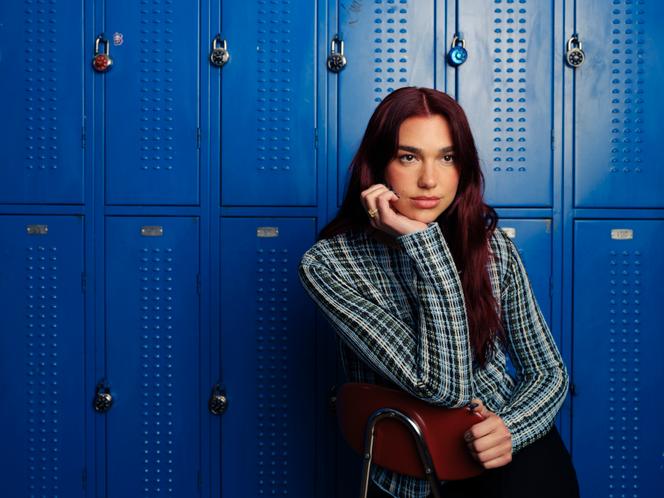


On the cover of her third album, singer Dua Lipa is in great danger, like the bather in the first scene of Jaws. In murky waters, she faces a shark's fin. The visual echoes the London pop group Blur's idea for The Great Escape: golden boys diving from their speedboat, likely to be devoured by a shark. That album was released in 1995, the year the daughter of a Kosovar rock musician was born in London.
Like Blur, Lipa plays on the contrast between the desperate situation and the title: Radical Optimism. Here, only the second word is accurate: Ahead of the summer solstice, the album does celebrate hedonism, in stark contrast to the darkness of the times. But radical it is not.
Unlike Taylor Swift, who turned to folk for a while, or Beyoncé, with her recent country urges, Dua Lipa isn't abandoning her comfort zone. Rather than get in the water, she prefers to stay at the beach bar and sip a cocktail – which you can hear right away on the tropical house of End of an Era. And when she does venture out, it's to the adjoining dance floor.
After all, the formula worked well for her two previous albums, Dua Lipa (2017) with its synthetic, percussive R'n'B, and especially Future Nostalgia (2020), which crowned her the new queen of disco (or queen of neo-disco?) with Chic-style funk bass and soaring strings. It told a story to the tune of revenge since the unfortunate child had been rejected from her school choir, only to be mocked viciously on social media for her poor dancing skills.
Four years later, an eternity when fame can be as fleeting as it is today, Radical Optimism is released under conditions worthy of her star status – in other words, with maximum withholding of information to fuel the mystery that will generate buzz and speculation.
At best, we learned that Lipa deleted her entire Instagram account and dyed her hair auburn. To renew herself, she claims to have immersed herself in the dominant trends of the 1990s UK – Britpop (which includes Blur) and trip-hop – and in "psychedelia" more generally. For Lipa, whose first influences are Pink (her most obvious vocal model), Justin Bieber, Nelly Furtado, and Christina Aguilera, this word does not refer to San Francisco and the Grateful Dead, but rather to a party in Ibiza.
This orientation nevertheless explains the presence of Kevin Parker, the Australian demiurge and multi-instrumentalist from Tame Impala, who put his stamp on the orchestration and production: huge bass, plenty of keyboards, filtered sounds, and the house gimmick, the repetition effect like a skipping CD (on Training Season, with its Balkan feel to it). The collaboration between a glamorous female personality and a bearded man from indie rock has become a classic since Lana Del Rey called on Dan Auerbach (The Black Keys) for the soporific Ultraviolence in 2014.
You have 41.84% of this article left to read. The rest is for subscribers only.
